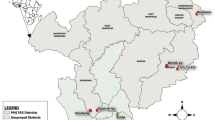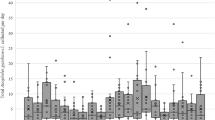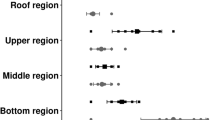Abstract
AN experiment is in progress in the Pare area of Tanganyika to find whether or not malaria can be controlled by residual treatment of huts with dieldrin. The area is 3–4,000 square miles, involving a population of 100,000. The Pare Mountains extend along the length of the treated area, at an altitude of about 4,000 ft. above sea-level. The population is about equally divided between the malarious plains and the mountains, which are separated by a steep escarpment. Surveys of the human population did not suggest that active transmission occurred on the mountains1. Huts were treated only in the plains, and the first cycle of spraying was completed in November 1955. Subsequent treatments continue at intervals of 8 months.
This is a preview of subscription content, access via your institution
Access options
Subscribe to this journal
Receive 51 print issues and online access
$199.00 per year
only $3.90 per issue
Buy this article
- Purchase on Springer Link
- Instant access to full article PDF
Prices may be subject to local taxes which are calculated during checkout
Similar content being viewed by others
References
Draper, C. C., and Smith, A., Trans. Roy. Soc. Trop. Med. Hyg., 51, 137 (1957).
Garnham, P. C. C., J. Nat. Mal. Soc., 7, 275 (1948).
Author information
Authors and Affiliations
Rights and permissions
About this article
Cite this article
SMITH, A. Effect of Residual House Spraying in the Plains on Anopheline Densities in Huts on the Pare Mountains. Nature 183, 198–199 (1959). https://doi.org/10.1038/183198a0
Issue Date:
DOI: https://doi.org/10.1038/183198a0
This article is cited by
-
A systematic review assessing the potential for release of vector species from competition following insecticide-based population suppression of Anopheles species in Africa
Parasites & Vectors (2021)
-
Costs of early detection systems for epidemic malaria in highland areas of Kenya and Uganda
Malaria Journal (2009)
-
Spatial targeted vector control in the highlands of Burundi and its impact on malaria transmission
Malaria Journal (2007)
Comments
By submitting a comment you agree to abide by our Terms and Community Guidelines. If you find something abusive or that does not comply with our terms or guidelines please flag it as inappropriate.



